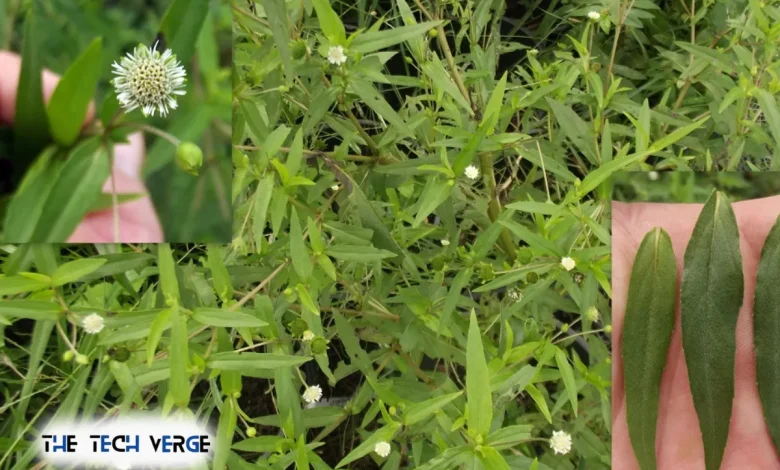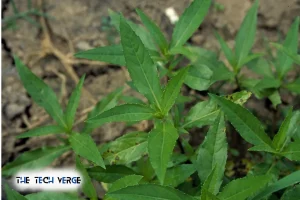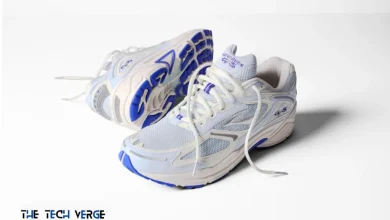Eclipta Alba: My Muddy Plant Adventure

Hi there! Allow me to introduce you to a really awesome plant friend of mine. Although its name is Eclipta alba, it is also known as “false daisy” or “bhringraj.” Imagine strolling through an extremely muddy and wet area, such as following a significant downpour. I discovered it there! This little green plant has lovely little white flowers that resemble miniature daisies. For hundreds of years, people have used it to feel better; it’s like nature’s vitamin or band-aid. It thrives in areas like swamps and riverbanks where land and water meet. I felt like a treasure hunter when I found it on my trip! This wonderful plant can soothe stomachaches, keep hair dark, and even shield skin.
My First Glimpse of Eclipta Alba
Imagine this: I was trudging through squishy grass in Assam, India—mud clung to my boots with every glop! My guide, Ravi, suddenly knelt down. “Look here,” he whispered, pointing thin green stems with tiny white flowers. “That’s Eclipta alba—small but super strong!” At first, it looked like just a weed. But up close, the flowers had bright yellow centers, glowing like fairy lights in jungle. Ravi said villagers use every part—roots, stems, leaves—for healing cuts or making healthy tea. He crushed leaf, releasing an earthy scent. “Smell that? Nature’s medicine!” Rain had turned ground into sponge—perfect for this water-loving plant. Dragonflies buzzed overhead as we picked a few leaves, leaving roots behind so more could grow. Locals call it keesraj, the “hair king,” for its power keep hair black and shiny.
Tech Tools and Eclipta Alba’s Secrets
Exciting tech is unlocking the secrets of Eclipta alba! Scientists use DNA barcoding—like a plant fingerprint—to check if a plant is truly Eclipta alba or just a look-alike. Fun apps like iNaturalist let people snap plant photos and instantly ID them—no heavy books needed! Drones fly overhead to spot where these plants grow, helping protect their habitats. In labs, machines break the plant down to find powerful ingredients like wedelolactone, known for liver support. Scientists also create fake rainy seasons to study how the plant reacts to climate changes. Farmers use soil sensors to water plants only when needed, saving water. A company called HerbTech even made a fast-acting Eclipta alba pill by wrapping its nutrients in tiny bubbles. Online, #EcliptaAlba has over 12,000 photos! Still, old wisdom matters—grandparents in Kerala teach kids plant secrets through phone videos, blending tradition with tech.
Healing Rituals with Eclipta Alba
Across Asia, Eclipta alba used like gentle healer. In Sri Lanka, I saw a grandmother make green jewel-toned hair oil by cooking its leaves in coconut oil. “Rub this on your head,” she said, “it keeps hair strong and black!” Ancient health texts call it rasayana—a special liver tonic. Some families make “sunshine tea” by soaking leaves in water jars under the sun to sip during fevers. Near Cambodia’s great lake, fishermen chew stems to ease toothaches. Science backs these uses: Eclipta alba contains antioxidants that calm inflammation and germ-fighting compounds that protect cuts. In Thailand, a healer mashed the leaves into a paste and applied it to a boy’s scraped knee—no Band-Aid needed! It’s nature’s first-aid kit. But safety matters: pregnant women should avoid it, and it’s always best to ask a doctor before use. From teas to pastes, this humble herb quietly works wonders across generations.
Sunburn Soother: Squish leaves with aloe vera gel, spread on pink skin
Tummy Trouble Tea: Soak dried leaves in hot water, sip slowly
Bug-Bite Shield: Rub fresh stems on your skin to shoo mosquitoes away

Growing Your Own Eclipta Alba
Want your very own eclipta alba? It’s super easy! This tough little plant LOVES having “wet feet”—think puddles or super soggy gardens. Start by sprinkling seeds in very shallow water (just 1-2 cm deep) when spring comes. In about 10-14 days, you’ll see baby sprouts popping up with cute oval leaves! Don’t have a swamp? No problem! Try these tricks:
Bucket Garden: Poke holes in a bucket, fill with compost dirt, keep it waterlogged
Balcony Bog: Use a kid’s pool! Layer rocks, sand, and soil—keep it wet
Indoor Rainforest: Use plant lights and water trays to fake monsoon weather
I tried this in my little city apartment. Guess what? Cheerful white flowers waved hello in weeks! Pick leaves when your plant is about as tall as a ruler (30 cm). Snip stems gently, leaving roots cozy in the dirt to grow again. Hang leaf bunches upside-down in the shade to dry. Keep them safe in jars with tight lids! Pro growing tips:
Skip yucky chemicals—try compost tea for plant food
Plant mint nearby to bug-proof your eclipta alba
Pick leaves from different spots each time so soil stays happy
Eclipta Alba in Global Kitchens
Eclipta alba isn’t just medicine—it’s yummy food too! In Bangladesh, I tried “bhringraj chutney”—a spicy green dip made with leaves, tangy tamarind, and chili, slathered on sizzling fish. Tastes peppery and fresh, like wild spinach! Cooks in Indonesia stir-fry the buds with garlic, calling it “false daisy delight.” Want to taste adventure? Try these:
Magic Green Rice: Chop leaves and toss into cooking rice
Superhero Smoothie: Blend leaves with pineapple and ginger
Crispy Flower Bites: Dip flowers in chickpea batter, fry till golden
It’s a nutrient superhero too! Packed with iron for playtime energy, vitamin E for soft skin, and as much calcium as spinach. At a food lab in Mumbai, I tasted eclipta alba ice cream—surprisingly minty fresh! Remember: Never pick too much from wild spots. Grow your own or buy from friendly earth-helping farms.
see also: Palo Azul Tea: My Mexican Magic Brew Journey
Protecting Eclipta Alba’s Future
Oh no! Wetlands—the comfy home for eclipta alba—are disappearing. Dirty water and digging machines hurt where it lives. In Nepal’s Chitwan park, rangers show travelers how to plant baby eclipta alba near swampy edges. “Each little plant holds dirt together and feeds butterflies!” said ranger Anjali. In Vietnam, village ladies learn to grow it for sale, saving wild plants. As explorers, WE can help:
Use fun science apps to report eclipta alba sightings
Pick herbal products with FairWild stickers (means fair to nature!)
Help groups like Wetlands International save marshy homes
My trip finished at a busy Delhi spice market. Sellers had dried eclipta alba next to golden turmeric. One seller twinkled his eyes: “This tiny plant saw kings and queens come and go!”
Conclusion
Eclipta alba is more than a plant—it’s a quiet teacher with old, old stories. From swampy adventures to phone screens, it connects ancient smarts with today’s world. As travelers, we protect its story by walking gently and learning with big hearts. Next time you see little white flowers in the mud, smile! Adventure and healing hide in the quietest, muddiest places.





